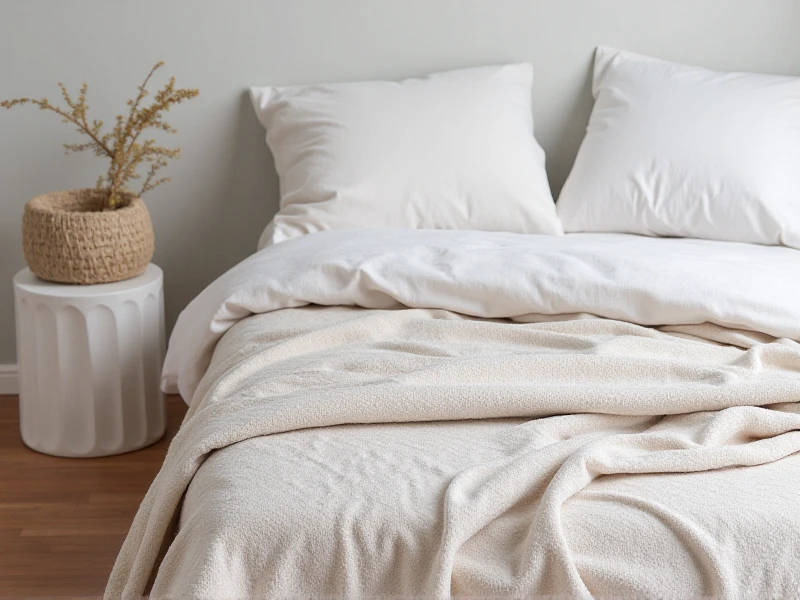The Ultimate Guide to Choosing the Perfect Pillowcase for Better Sleep and Skin Health
2025-06-05

When was the last time you stopped to consider your pillowcase? It's more than just a cover for your pillow—it's a vital part of your nightly routine that can significantly impact your sleep quality and skin health. Many people overlook this humble bedding item, but investing in the right pillowcase can lead to fewer wrinkles, reduced breakouts, and more restful nights. In this guide, we'll explore why a high-quality pillowcase matters, the different materials available, and how to select the best one for your needs. By the end, you'll see why upgrading your pillowcase is a small change that brings big rewards.
Understanding Pillowcase Materials: The Key to Comfort and Longevity
Choosing the right pillowcase starts with understanding the material. Not all fabrics are created equal, and each type offers unique benefits. For instance, 100% cotton pillowcases are a popular choice for their breathability and softness. They wick moisture away from your skin, making them ideal for hot sleepers. On cool nights, cotton keeps you comfortable without trapping heat, reducing the chances of night sweats that can disrupt sleep. Cotton pillowcases also come in different weaves, like percale or sateen—percale is crisp and cool, while sateen feels silky smooth.
Silk pillowcases, while often a bit pricier, are renowned for their skin-friendly properties. The smooth surface of a silk pillowcase minimizes friction against your hair and face, which helps prevent frizz, tangles, and creases as you sleep. This is why dermatologists recommend silk pillowcases for anyone prone to acne or premature aging; they reduce irritation and help retain moisture in your skin. Plus, silk pillowcases are naturally hypoallergenic, making them perfect for allergy sufferers. They're easy to care for too—just hand wash or use a gentle cycle to maintain their luxurious feel.
Beyond these, synthetic materials like microfiber or bamboo-derived rayon offer budget-friendly alternatives. Microfiber pillowcases are durable and resist wrinkles, making them low-maintenance for busy households. Bamboo pillowcases, made from eco-friendly rayon fibers, are moisture-wicking and antibacterial, which fights odors over time. They're a great sustainable choice for those who prioritize environmental impact. Each material affects how cool or warm you stay at night, so consider your climate and sleep habits when picking a pillowcase. For example, if you're a warm sleeper, lightweight fabrics like bamboo or cotton work best, while silk is unbeatable for sensitive skin.
Top Benefits of Using the Right Pillowcase
Upgrading your pillowcase isn't just about comfort—it delivers tangible health advantages. First, better sleep hygiene. Pillowcases act as a barrier against sweat, oils, and dirt that accumulate during the night. Changing them weekly prevents bacteria buildup, reducing the risk of skin issues like acne or eczema. Silk pillowcases, in particular, help regulate skin hydration, which is crucial for dry skin types. A clean, soft pillowcase also soothes your face as you rest, promoting deeper sleep cycles.
Second, investing in a good pillowcase can save you money on skincare in the long run. By minimizing friction and irritation, a quality pillowcase reduces damage to hair follicles and skin cells. That means fewer split ends, reduced breakage, and a smoother complexion over time. For people with allergies, dust mite-resistant pillowcases—whether woven tightly or treated finishes—cut down on nighttime symptoms like sneezing or congestion. You'll wake up feeling refreshed, not rushed for allergy meds.
Lastly, emotional well-being ties into this small upgrade. Sliding into a soft, inviting pillowcase creates a luxurious start and end to your day. Studies show that comfort rituals improve sleep satisfaction and overall mood. So, whether it's a cooling cotton pillowcase for summer or a cozy silk one for winter, the psychological perk can't be understated.
How to Select the Ideal Pillowcase for Your Lifestyle
Picking the best pillowcase depends on your personal needs—consider things like your sleeping position, skin type, and style preferences. If you're a stomach or side sleeper, opt for a pillowcase with a smooth texture like silk to prevent creases and wrinkles. Back sleepers might prefer cotton for its support and airflow. Assess your skin issues too: for acne-prone skin, antimicrobial bamboo pillowcases help fight breakouts, while sensitive skin benefits from silk's gentle touch.
Sizing is another critical factor. Always match your pillowcase to your pillow size—standard, queen, or king—to avoid gaps that lead to discomfort. Closures matter as well; envelope-style pillowcases keep pillows in place better than open-ended designs, so you avoid midnight adjustments. Look for features like zippered openings for easy cleaning or decorative details for a bedroom refresh.
For maintenance, choose pillowcases that are machine-washable and durable. Cotton pillowcases last longer with cold-water washes and air drying, whereas silk requires gentle care to preserve luster. Rotate multiple pillowcases to extend their life and keep your bed smelling fresh. Budget-wise, you can find excellent options: silk pillowcases cost $30-$50 on average, cotton and bamboo are $15-$25, and microfiber is under $10. Online reviews and retailer recommendations help narrow down brands that match your color and pattern tastes.
Wrap-Up: Elevate Your Sleep Experience Today
In summary, your pillowcase is a sleep superhero that deserves attention. From boosting skin health to enhancing nightly comfort, the right choice can transform your rest routine. Start by evaluating your priorities—like whether you need cooling breathability of a cotton pillowcase or the anti-aging perks of silk—and make a switch this week. Simple steps like washing weekly ensure long-term benefits. Remember, a better pillowcase isn't an indulgence; it's a smart move for a healthier, happier you. So, upgrade yours now and feel the difference!
Category: